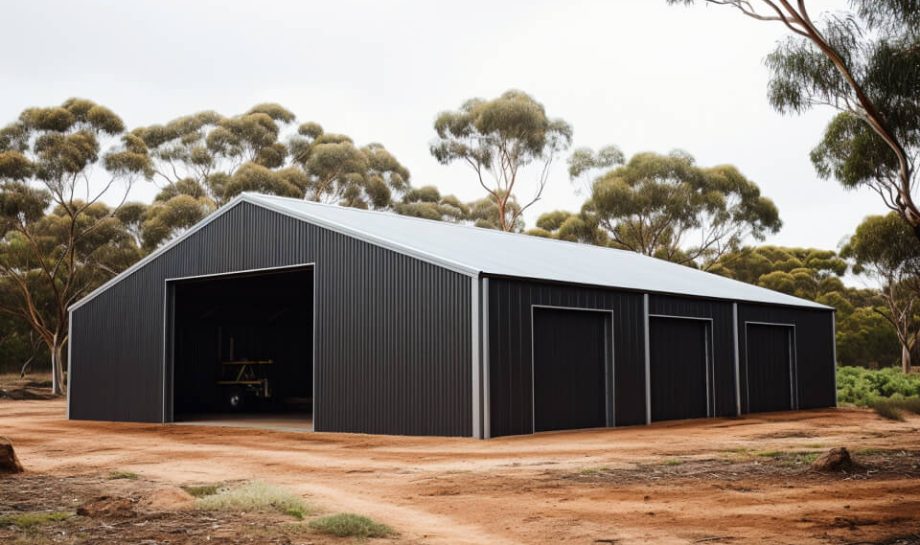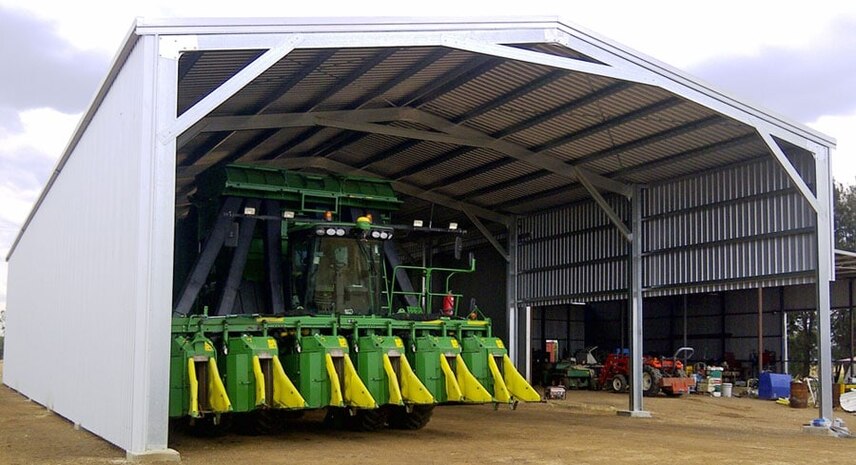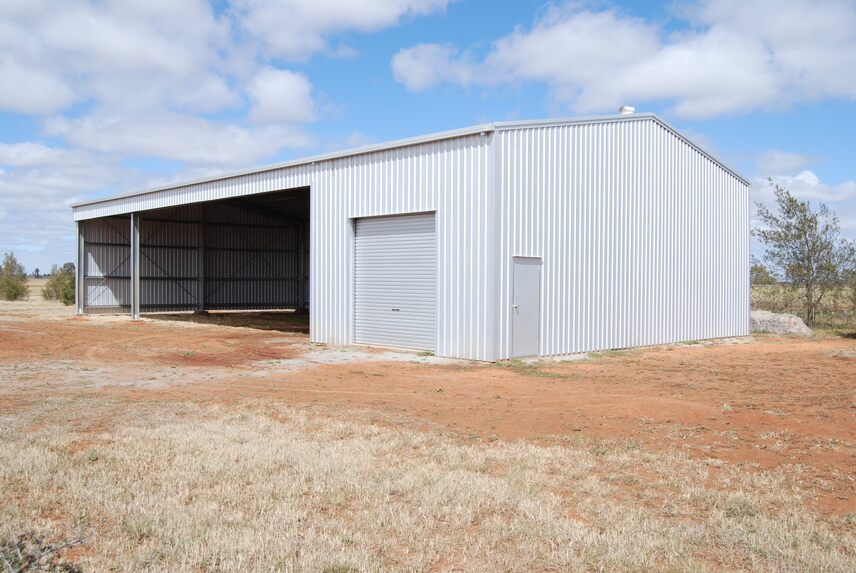Maximise Storage With Custom-Built Farm Sheds

Running an efficient farm is no easy task—especially when it comes to storage. There never seems to be enough space for machinery, implements, tools, seeds, feed, and harvested crops. Congested, disorganised sheds lead to deterioration of produce, increased maintenance, and lost time. In WA’s tough conditions—heat, dust, salty coastal air, and seasonal storms—you need storage tailored to your climate and site. Purpose-built sheds provide secure, weather-resistant space that protects agricultural assets. With smart design, considered materials, and careful layout planning, sheds can be customised to maximise capacity and improve day-to-day efficiency.
In this article, we share practical insights into farm shed solutions to help you transform your storage. We’ll cover materials, design, layout, and organisation strategies suited to Perth and regional WA conditions.
With clever planning, you can achieve organised, accessible sheds that match your specific storage needs. Read on for tips to start maximising your farm’s storage potential with the right rural shed solutions.
Understanding the Diversity of Farm Storage Needs

Running a farm means juggling very different storage requirements—from heavy machinery to delicate produce. Without proper storage, you risk damage, spoilage, and loss of valuable assets. Well-organised sheds also drive productivity by making tools and supplies easy to find and safer to handle.
Your storage needs may include:
Equipment
- Tractors, ploughs, harvesters, headers, and attachments require shelter to prevent UV, rain, and wind-related deterioration and to simplify maintenance.
Tools
- Hand tools and power tools benefit from organised storage (racks, shadow boards, cabinets) to ensure quick access and prevent loss.
Crops
- Grains, fruit, and vegetables need secure, well-ventilated or climate-controlled storage to minimise moisture, pests, and spoilage. For best practice in stored grain, see Stored Grain.
Livestock Feed
- Hay, silage, and bagged or bulk feeds must be stored off the ground, dry, and protected from vermin to maintain nutritional quality and prevent contamination.
Chemicals and Fertilisers
- Ag-chemicals, fuel, and fertilisers require compliant storage, segregation, and ventilation to reduce risk and maintain safety.
Balancing these diverse requirements is challenging—but with smart organisation and a shed designed around your workflows, you can store it all effectively and safely.
Choosing the Right Shed for Your Storage Needs

When investing in a rural shed, begin with a design tailored to your storage goals and local conditions. Consider the following:
Size Matters
Select dimensions that fit your current storage and allow for future growth. Think in three dimensions—length, width, and height. Confirm clearances for tall machinery, header fronts, seeders, and tipper trucks. Plan bay widths and drive-through spans for turning circles and safe manoeuvring.
Design Considerations
Opt for clear-span designs that maximise usable floor space and flexibility. Include wide bays, open fronts where appropriate, and modular sections for zoning (machinery, crops, tools). Consider a drive-through configuration, designated loading zones, and hardstand areas to streamline traffic and reduce bottlenecks.
Ventilation and Condensation Control
Adequate airflow helps maintain crop quality and protects metal components. Crossflow ventilation, ridge vents, and whirlybirds can reduce heat and moisture buildup. For sensitive produce or electronics, consider insulation and passive or mechanical ventilation to manage humidity and condensation.
Accessibility
Ensure easy access to all areas with wide openings and thoughtful placement. Sliding, roller, or hydraulic doors improve efficiency and safety for larger access points. Position entrances to suit prevailing winds and workflow, and design clear aisles to reach frequently used items without moving other equipment.
Durability and Weather Resistance
Choose materials and coatings that withstand WA’s climate. Galvanised frames and high-quality cladding (such as COLORBOND steel designed for Australian conditions) resist corrosion, especially in coastal zones. Consider wind region ratings, guttering and drainage, and secure fixings to handle storms and cyclonic gusts in some areas. Learn more about steel cladding options at COLORBOND.
Materials for Perth and Regional WA
- Coastal or high-salt environments: prefer marine-grade coatings and additional corrosion protection.
- Hot inland sites: insulation and light-coloured roofing can reduce heat load.
- Bushfire-prone areas: specify ember protection and BAL-appropriate features.
- Local climate planning: reference Bureau of Meteorology climate data to inform ventilation, orientation, and rainwater management.
Choosing a shed designed for farm conditions maximises storage capacity, protects your assets, and streamlines everyday work.
Smart Layout and Organisation Strategies
A well-planned layout can double the usefulness of the same floor area:
- Zone the space: separate machinery, cropping inputs, chemicals, tools, and feed to improve safety and efficiency.
- Use vertical space: add pallet racking, mezzanines, and overhead storage for rarely used items; keep heavy items low.
- Define workflows: create clear loading/unloading areas, drive-through lanes, and safe pedestrian paths.
- Store off the floor: use pallets, dunnage, and shelving to keep items dry and reduce pest risk.
- Label and standardise: clear labelling, shadow boards, and standard storage bins save time and prevent loss.
- Lighting and power: bright, efficient lighting, ample GPOs, and task lighting make work faster and safer.
- Flooring and drainage: durable slabs, bunding where needed, and proper falls protect both assets and the building.
- Pest and biosecurity: seal gaps, fit vermin-proofing, and adopt good hygiene practices; see guidance at Farm Biosecurity.
Safety, Security, and Compliance
- Security: robust locks, limited sightlines for high-value items, perimeter lighting, and cameras deter theft.
- Safety: clear walkways, compliant racking, eyewash for chemical areas, and safe plant movement zones help prevent incidents. For general guidance, refer to Safe Work Australia.
- Approvals: check local council approvals, wind ratings, and any zoning or environmental requirements before building.
Farm Shed Solutions Perth
Finding the right storage solutions for your farm is crucial—but it doesn’t have to be daunting. With the diversity of equipment, tools, crops, and supplies to house, maximising your storage comes down to careful planning and a shed designed for your site and workflow.
Fair Dinkum Builds Western Sheds offers a wide range of customisable farm sheds to meet any farm’s needs. Whether you need a spacious clear-span shed for large machinery or a modular design to organise tools and supplies, we’ll tailor a solution to your exact requirements.
Our team brings decades of experience designing, building, and installing high-quality sheds across Perth and regional WA. We use durable, weather-resistant materials selected to withstand years in harsh Australian conditions.
Custom farm sheds can be designed to meet your needs, whatever your farm size. If you are located in WA, check out our range of farm sheds in Perth for more options tailored to your requirements.
Don’t settle for disorganisation and clutter—let us help build the tailored shed your farm deserves.
If you’re unsure about the size of your shed, don’t hesitate to get in touch and we’ll be happy to assist.